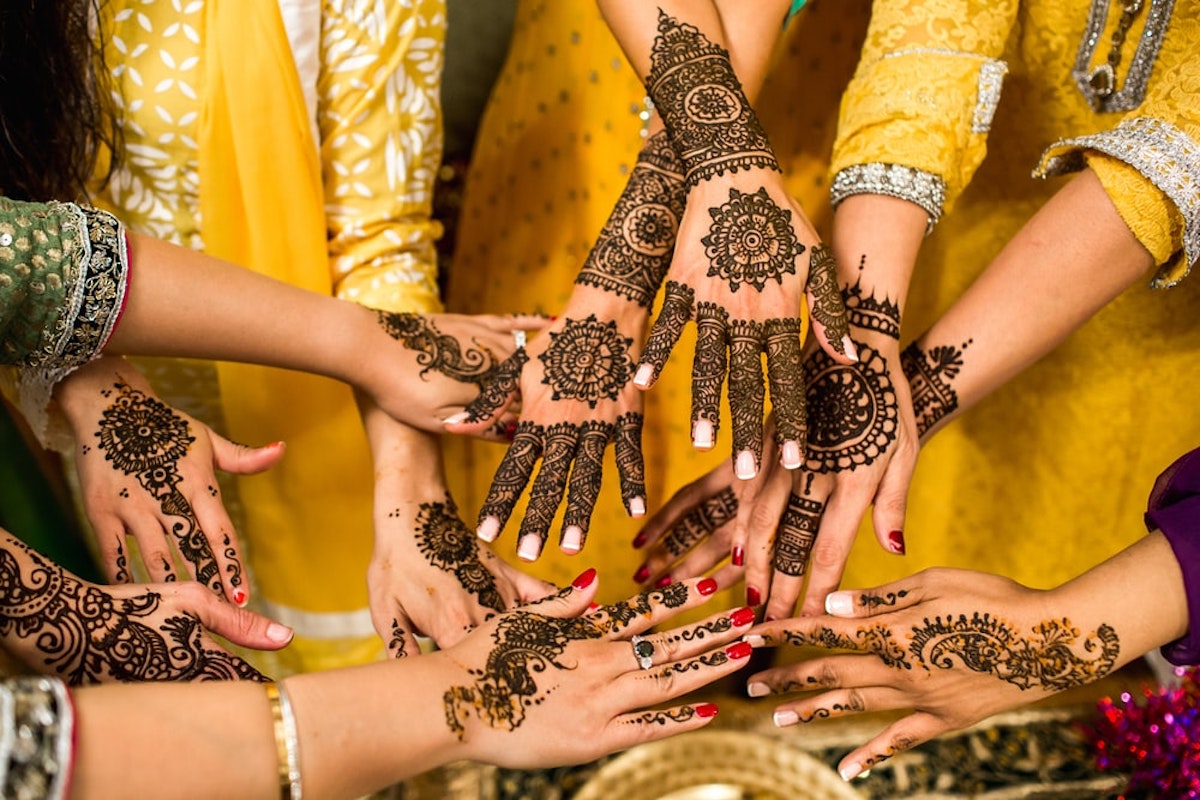
Wedding Traditions From Around The World
A wedding is one of the most celebrated moments in one’s life. All over the world, this momentous ceremony is celebrated in many different ways, with many different traditions. In theory, if you follow these traditions, you, as a couple, are given good luck and eternal joy for the rest of your lives.
1. Releasing a Pair of Doves in the Philippines
After the wedding ceremony, the couple releases a pair of doves from their cage. A male and a female dove are released by the couple to symbolize love, purity, and harmony. Releasing the doves also represents coming home to each other since doves always find their way back home.
2. India’s Henna Party
The night before the wedding, Indian women hold a wedding party for all the women in the bride’s family. Henna artists come and paint the hands and feet of these women, to symbolize joy, beauty, offering, and spiritual awakening. Also called a Mehndi party, women are dressed in colorful, heavily embroidered, and patterned dresses.
3. Something Old, Something New, Something Borrowed, and Something Blue in the USA
Taken from an old Victorian English rhyme, it is tradition that the bride carries with her or includes in her wedding garb these four good-luck objects. According to the rhyme, these objects are meant to ward off the Evil Eye, which could curse the bride and deem her infertile. Something Old is usually given by the parents in the form of a family heirloom, meant to represent continuity. Something New, on the other hand, is to symbolize optimism for the future. In addition, Something Borrowed symbolizes good luck, or to ensure a little fortune from the owner of the object rubs off on the bride and couple. Typically, you borrow something from a couple who is blessed with children, or whose marriage is prosperous. And lastly, Something Blue is said to represent love and fidelity. It is also often forgotten that the English rhyme also included “Sixpence in our Shoe,” which is meant to represent prosperity. The father of the groom typically provides the bride with 6 pennies.
4. Jewish Tradition of Breaking Glass
There are many interpretations of this Jewish tradition, where the couple breaks a glass right after the ceremony. One of the reasons why this tradition is done is to remember the destruction of the Jewish temple in Jerusalem, said to be one of the most crucial events in Jewish history. It is said that the breaking of the glass is meant to commemorate this sad event amidst a joyous occasion, so they don’t end up sinning in their merriment. Another symbolism associated with the breaking of glass is to remind the couple that marriage is as fragile as glass and that one thoughtless act could cause irrevocable damage. While another meaning suggests this tradition is meant to symbolize the shattering of two separate souls to merge as one.
5. The Unity Bowl in Australia
During a wedding reception in Australia, family and friends fill a large bowl with different colored stones. A great way to incorporate loved ones in the party, the unity bowl represents the support and love given by family and friends to the couple. The couple collects the bowl and keeps it in their home to remind them of the union that has been created between family and friends because of their marriage.
6. Blackening of the Couple in Scotland
On the night before the wedding, the couple’s family and friends kidnap them and cover them with all sorts of disgusting things that range from ash, molasses, flour, paint, and just about anything. They are then paraded around town or tied to a tree. This tradition is said to symbolize the couple’s preparedness to be ready for anything that comes their way in their marriage. The act is also meant to ward off evil spirits.
7. A Goose for the Mother of the Bride in South Korea
Before the wedding ceremony begins on the wedding day, the groom in a traditional South Korean wedding gives the bride’s mother a goose or a Mandarin duck. A live goose was given many years ago but today, a wooden goose called Kieogi is given to symbolize structure and harmony, as well as keeping the same partner for life, and leaving a great legacy.
The Mandarin duck are animals that have mates for life and the giving of the Kierogi is given as a promise to the bride’s mother that he will take care of the bride all throughout his life.
8. Log Cutting in Germany
Just as soon as the ceremony is done, the bride and groom are presented with a log to cut together. They then cut the log in front of family and friends, and begin to cut the log with a large saw that has 2 handles. The tradition is said to represent the couple’s ability to work together and get through any obstacles that may come their way.
9. The Kissing Party in Sweden
During the wedding reception in Sweden, if the bride steps out of the room, all the women in the room stand up, form a line, and take turns kissing the groom. Similarly, when the groom leaves the room, all the men in the room stand up, form a line, and take turns kissing the bride. It is a fun tradition in Sweden that brings in the laughs at any wedding party. It could also symbolize or act as a reminder that if you take your eyes off your spouse, even for just one minute, that someone else could desire them, so you must always give your spouse the love and attention they need during your marriage, or else.
10. Carrying Fire in South Africa
Once the couple is married, parents of both sides light a fire from their kitchen and carry this fire from their home to the couple’s new home, where a fire would be lit. This tradition is said to symbolize the beginning of a fruitful life together.
Wedding traditions may seem like superstitious beliefs or there’s no logic behind them but since time immemorial, couples have held them as important aspects of their ceremonies. Whether they do bring good luck or not, or whether they ward off evil spirits or not, they’re fun and engaging rituals that help couples look forward to their harmonious union and good luck for their shared future.



